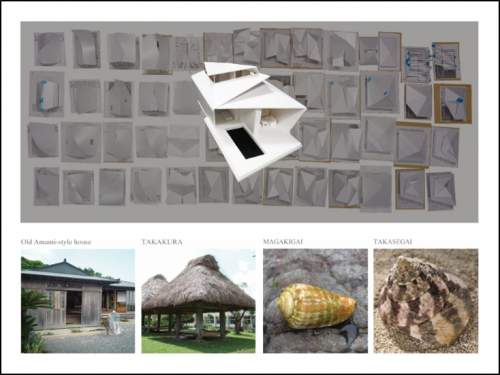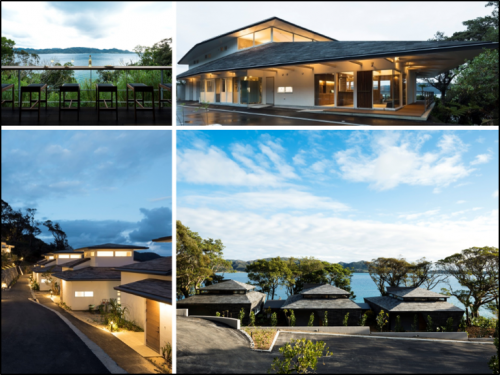Concept No.2
Restoring the local indigenous vegetation which has deteriorated, placed in between nature and human activity
Even though Amami is still blessed with abundant nature compared to urban areas, there are many areas that the lanscape has undergone changes as the result of human activities. The team studied books on local vegetation and consulted local specialists in order to restore the seaside vegetation indigenous to the area.
The site was divided into several zones with each a theme such as Forest Village Zone , Seaside Village Zone, etc. and the landscape and planting was designed according to those themes.

Concept No.3
Combining the sense of tradition and newness together
in between traditional and new architecture
Upon designing the villas, Yamashita put in a lot of effort to create an architectural form that represents the culture and nature of Amami. He studied the forms of not only traditional local hip-and-gable roofed houses and Amamian raised-floor granaries, but also that of local animals such as conch-shells found in Amami.
After creating numerous study models, a new form derived from traditional architectural vocabularies and the form of conch-shells was born.

Concept No.4
Developing a material for architecture unique to Amami in between methods of traditional industries and new materials
In Amami, there are species of wood such as luchu pine (Okinawa pine; Pinus luchuensis) and itajii (sudajii; Castanopsis sieboldii.) They are mostly used as woodchips or lumber for public works, not for architectural construction. On top of that, many luchu pine trees in Amami has recently been infected and killed by pine wood nematode, leaving a negative impact on the local lumber industry.
Yamashita teamed up with a local woodcraft studio and experimented to dye itajii lumber using the method of Oshima tsumugi. Itajii, containg tannin, changes its color to dark gray when soaked in the iron-rich mud of Amami. The team accumulated data by testing various lumber thickness, soaking time, and drying methods. The roofs of all the structures and the exterior walls of the Pool Villas are clad with this newly developed material.

Concept No.5
Providing a wide variety of accommodation facilities and food services in between times, before Amami Islands is formally enlisted as a UNESCO natural heritage site
In January 2013, the Japanese government applied for the inclusion of the ” Amami and Ryukyu islands” onUNESCO’s provisional list of candidates for World Heritage sites. Four years later, it fomally nominated the area comprised of Amami and Tokunoshima Islands, the northern part of Okinawa Prefecture’s main island and Iriomote Island (also in Okinawa) as a Natural Heritage candidate site. Whether the area would be formally nominated or not, is to be officially determined by the summer of 2018.
If Amami gets UNESCO natural heritage listing, the number of tourists, both domestic and international, is likely to increase exponentially. Therefore, Nest at Amami Beach Villas was designed as a luxurious resort in order to add variety to existing accommodations, and to offer a dining space that will enhance the gastronomic experience which is an essential part of travel.
Amami may go through significant changes after the listing, but we aim to accept the good changes while cherishing and protecting the precious tradition of Amami. This resort is a product of such a wish.





